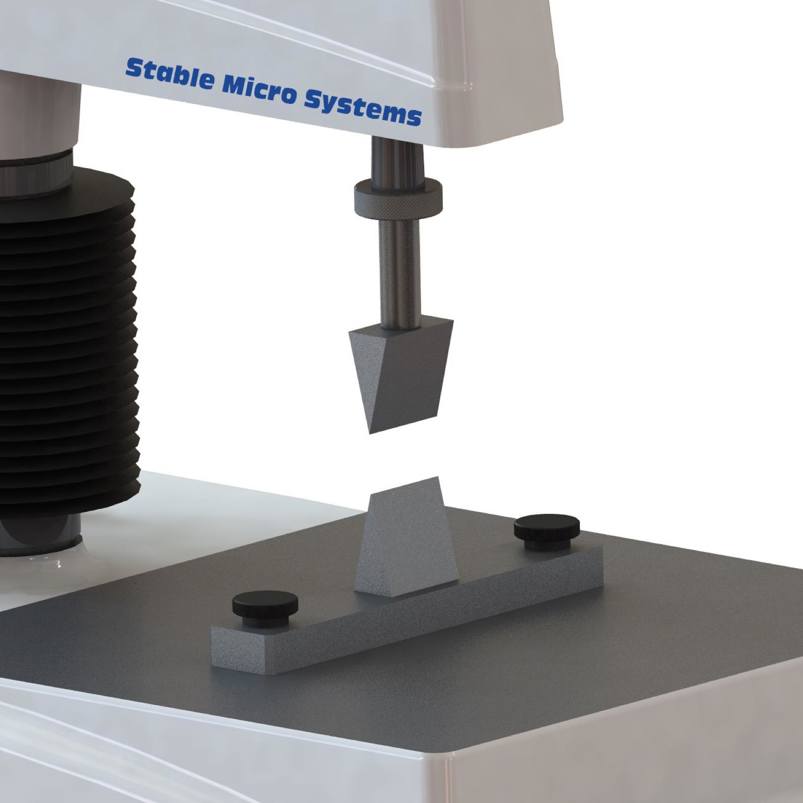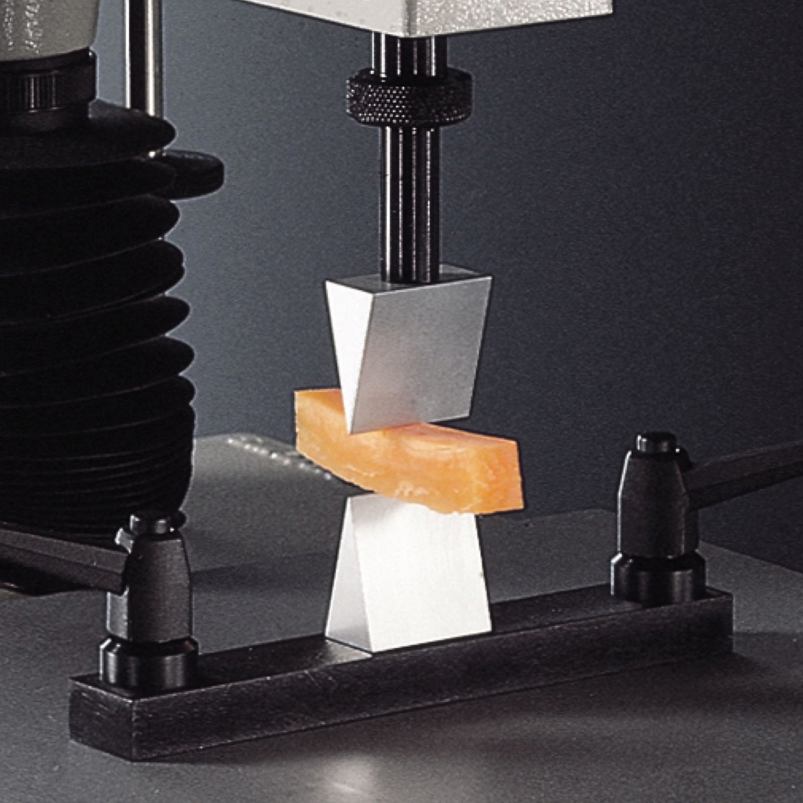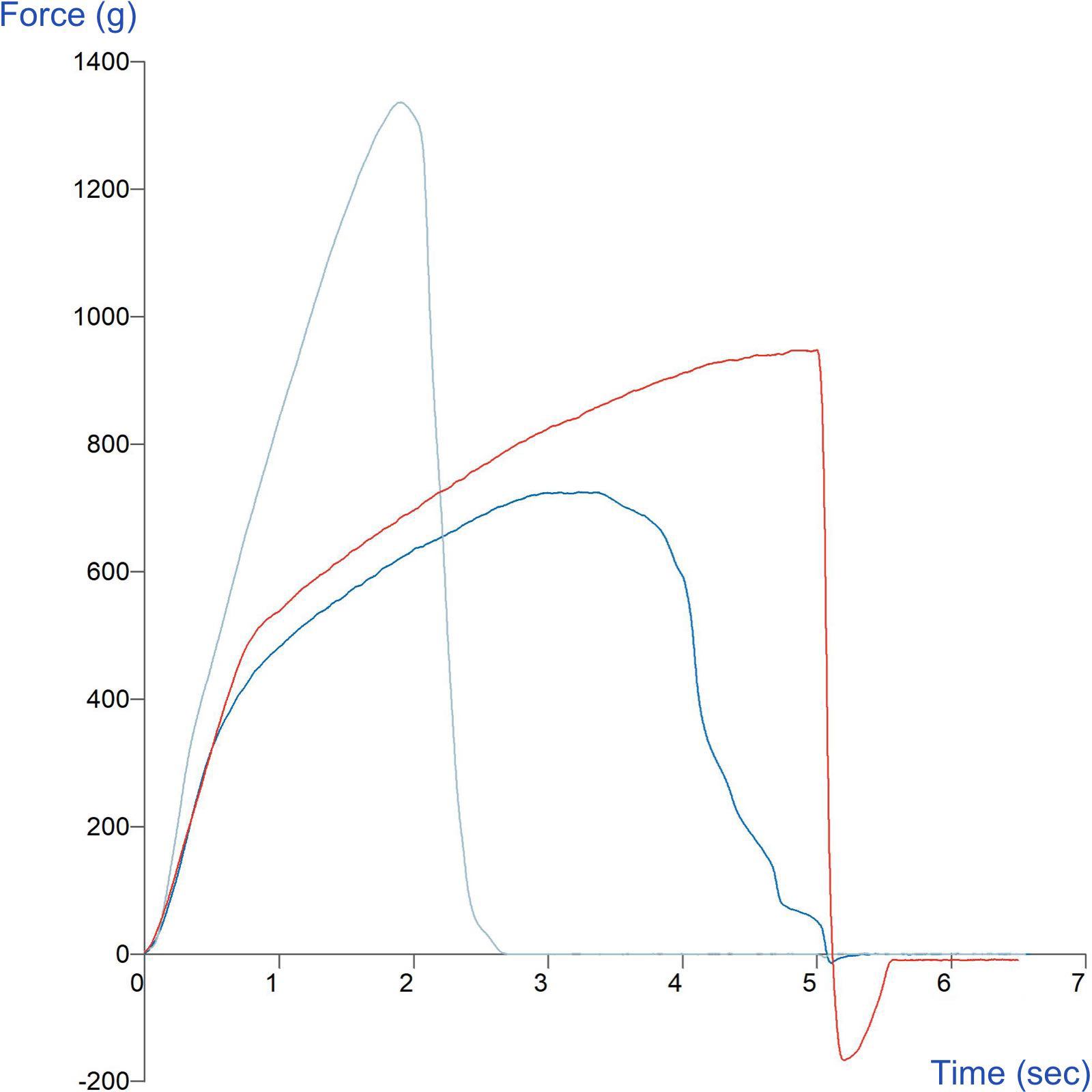Product overview
Fracture Wedges provides a means to assess cutting from both the top and bottom of the sample via an upper and lower wedge each with a cutting angle of 30° and 30mm width. The lower wedge is fixed directly to the base of the Texture Analyser and the upper wedge is connected directly to the Load Cell.
Typical examples include cheese and vegetables which are held on the lower wedge and the force to fracture is measured.
How do the Fracture Wedges work?
Ideal sample form
This attachment can only be used to cut through a sample which is solid and self-supporting. Consider that if the upper set of teeth were straightened they would effectively form a knife edge – using any form of blade can therefore represent the force to cut or 'bite' into a sample.
Benefits and limitations
- Biting/crack propagation occurs from both sides of the sample.
- Maximum sample width: 30mm.
- Sample needs to be held in position until wedges are able to hold the sample.
Optional extras
Top fracture wedge – A/WEG-T
Bottom fracture wedge – A/WEG-B
Technical information
Installation
Full installation instructions are provided within the Education Zone of the latest Exponent/Connect software version and on the technical information sheet accompanying this product.
Chemical compatibility
Stable Micro Systems probes and attachments are commonly made from four materials: anodised aluminium (AA6082 T6), stainless steel (316 T), Delrin (acetyl copolymer) and Perspex (polycarbonate).
In general use, probes and attachments made from these materials will be suitable for testing food products and inert non-food materials.
The four materials listed above are not universally resistant to all types of chemicals and as such the compatibility of the probe/attachment material with the product (to be tested) must be established to prevent damage to the probes and attachments. If the compatibility of the product with the probe is unknown to the customer then the chemical information about the product (Material Safety Data Sheet or Product Data Sheet) should be submitted to Stable Micro Systems. Stable Micro Systems will then assess the suitability of the probe/attachment material for use with the product and advise accordingly. If this advice is not sought then Stable Micro Systems will not accept liability for probes/attachments damaged by chemical attack from the product being tested.
Cleaning and maintenance
All probes and attachments may be cleaned in warm (or hand hot) water using a mild detergent. A soft brush may be used but abrasive cleaning aids should be avoided. Stable Micro Systems products should not be microwaved or cleaned in a dishwasher.
Screw threads should be lightly lubricated after drying using a light lubricant, e.g. petroleum jelly, mineral oil. This will aid the fitting and unscrewing of the item. Each component of a probe or attachment should be wrapped separately when stored, to avoid scratching or chipping. This will safeguard against any unnecessary damage to the accessory.



